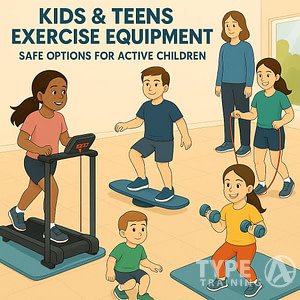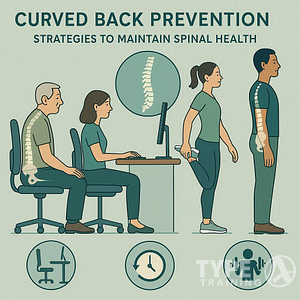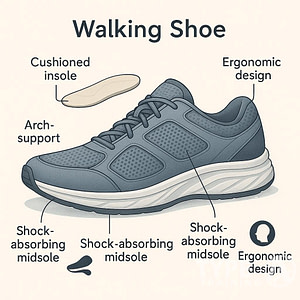Achieving a positive work-life balance is essential for your overall well-being. It involves managing your personal and professional responsibilities in a way that allows you to have time for yourself, your family, and your career. A good work-life balance can help you reduce stress, increase job satisfaction, and improve your physical and mental health.
However, maintaining this balance can be challenging, especially in fast-paced work environments. The pressure to meet deadlines, attend meetings, and respond to emails can make it difficult to find time for other important aspects of your life. This can lead to burnout, decreased productivity, and even health problems. Therefore, it is important to find ways to manage your time and prioritize your responsibilities to achieve a healthy balance.
One effective way to achieve a positive work-life balance is by incorporating corporate fitness programs into your weekly or daily routine. Exercise can help you reduce stress, boost your mood, and improve your overall health. It can also help you manage your time better by increasing your energy levels and productivity. By making corporate fitness in your workplace a priority, you can achieve a better balance between your personal and professional life.
Popular posts:
Understanding Work-Life Balance
Achieving a positive work-life balance is essential for your health and well-being. Work-life balance is the concept of balancing your professional and personal life. It is a state of equilibrium where you can manage your work and personal responsibilities without one interfering with the other.
The key to achieving work-life balance is to find the right balance between your work and personal life. This means setting boundaries and prioritizing your time and energy. It is important to remember that work-life balance is not about dividing your time equally between work and personal life. Instead, it is about finding a balance that works for you and your unique situation.
Work-life balance is often confused with work-life integration. Work-life integration is the concept of integrating your work and personal life. This means that instead of separating your work and personal life, you blend them together. While work-life integration can work for some people, it may not be the best solution for everyone.
To achieve a positive work-life balance, it is important to prioritize your time and energy. This means setting boundaries and learning to say no when necessary. It is also important to take care of yourself both physically and mentally. This includes getting enough sleep, eating a healthy diet, and exercising regularly.
The Importance of Work-Life Balance
(image credit: knowledge-swami.com)
Achieving a positive work-life balance is crucial for your overall health and well-being. It is important to find a balance between your work life and your personal life to avoid negative consequences like stress, burnout, and dissatisfaction. A positive work-life balance can help you to feel more fulfilled in your personal life and perform better in your job.
One of the benefits of a positive work-life balance is the opportunity to separate work from personal time. This can help you to recharge and refresh, allowing you to return to work with renewed energy and focus. By setting boundaries and prioritizing your personal life, you can reduce stress and improve your mental health.
Social support is also an important aspect of achieving work-life balance. Joining group fitness classes or teams can provide a sense of community and support, which can help to reduce stress and improve your overall well-being. Additionally, structured fitness routines can help you to develop time management skills, which can be applied to other areas of your life.
Overall, achieving a positive work-life balance is essential for your health, happiness, and job performance. By prioritizing your personal life and finding ways to separate work from personal time, you can reduce stress, improve your mental health and well-being, and perform better in all areas of your life.
Negative Effects of Imbalance
When you don’t have a positive work-life balance, it can have various negative effects on your health, productivity, and overall well-being. Here are some of the most common negative effects of imbalance:
Burnout
When you’re working too much and not taking enough time for yourself, you may experience burnout. Burnout is a state of emotional, physical, and mental exhaustion caused by excessive and prolonged stress. It can lead to feelings of detachment, cynicism, and reduced performance.
Stress
Stress is a natural response to challenging situations, but chronic stress can have negative effects on your health. When you’re constantly overwhelmed, your body releases stress hormones that can lead to high
Overwhelmed
When you have too much on your plate, you may feel overwhelmed and unable to cope. This can lead to feelings of anxiety, depression, and other mental health issues.
Irritable
When you’re stressed and overwhelmed, you may become irritable and short-tempered. This can lead to conflicts with coworkers, friends, and family members.
Resentful
When you don’t have enough time for yourself or your loved ones, you may start to feel resentful. This can lead to feelings of guilt, anger, and frustration.
To avoid these negative effects, it’s essential to prioritize your well-being and find a healthy work-life balance. This may involve setting boundaries, delegating tasks, and taking time off when you need it. By taking care of yourself, you’ll be better equipped to handle the demands of work and life.
One way to ensure you are balancing your work and life is to keep a journal where you record your daily activities and how you feel throughout the day. This can help you identify areas where you need to make changes to achieve a better balance.
Establishing Boundaries and Priorities
(image credit: adurolife.com)
When it comes to achieving a positive work-life balance, establishing boundaries and priorities is crucial. Setting boundaries means defining what is acceptable to you and what is not, and communicating those limits to others. This includes setting boundaries around your time, energy, and resources. Prioritizing involves determining what is most important to you and focusing your time and energy on those things.
To establish boundaries, start by identifying your non-negotiables, or “hard” boundaries. These are the things that are most important to you and that you are not willing to compromise on. For example, you may decide that you will not work on weekends or that you will not respond to work emails after a certain time in the evening. Once you have identified your hard boundaries, communicate them clearly to your colleagues and loved ones.
In addition to hard boundaries, it’s also important to set “soft” boundaries. These are goals that you want to reach but are flexible around. For example, you may want to exercise every day, but you may be willing to skip a day if something important comes up. Soft boundaries allow for some flexibility and can help reduce stress and anxiety.
Prioritizing involves determining what is most important to you and focusing your time and energy on those things. Start by identifying your responsibilities and deadlines, and then prioritize them based on their importance and urgency. This can help you stay focused and avoid feeling overwhelmed.
One way to prioritize is to use a to-do list or a task management tool. Write down all of your tasks and then prioritize them based on their importance and urgency. You can also use the “80/20 rule,” which states that 80% of your results come from 20% of your efforts. Focus your time and energy on the tasks that will have the biggest impact.
Remember that you are in control of your time and energy. By setting boundaries and priorities, you can achieve a positive work-life balance and reduce stress and anxiety.
Effective Time Management Strategies
To achieve a positive work-life balance, effective time management strategies are crucial. By managing your time efficiently, you can reduce stress and increase productivity. Here are some strategies that can help:
Create a Routine
Creating a routine can help you manage your time better. By having a set schedule, you can prioritize your tasks and ensure that you are completing them on time. Start by identifying your most important tasks and scheduling them during your most productive hours. Be sure to include breaks in your routine to prevent burnout.
Set Realistic Working Hours
Setting realistic working hours is essential for maintaining a positive work-life balance. Determine how many hours you need to work each day to complete your tasks, and stick to that schedule. Avoid overworking yourself or taking on too many tasks at once, as this can lead to burnout and negatively impact your personal life.
Use Flexible Hours
If your job allows for flexible hours, take advantage of them. Flexible hours can help you balance your work and personal life by allowing you to work when it is most convenient for you. This can include working from home or adjusting your schedule to accommodate personal obligations.
Prioritize Your Tasks
Prioritizing your tasks can help you manage your time more efficiently. Start by identifying your most important tasks and completing them first. This can help you avoid procrastination and ensure that you are completing your work on time.
Use Time Management Tools
There are many time management tools available that can help you manage your time more effectively. These tools can include to-do lists, calendars, and productivity apps. Find the tools that work best for you and use them to stay organized and on track.
Table
Here is an example of a table that can help you manage your time more effectively:
| Task | Priority | Deadline |
|---|---|---|
| Email Response | High | Today |
| Report Writing | Medium | End of Week |
| Meeting Preparation | Low | Next Week |
By using this table, you can prioritize your tasks and ensure that you are completing them on time.
The Role of Support and Communication
Achieving a positive work-life balance requires a combination of factors, one of which is support. Having a support system can help you manage stress and maintain a healthy balance between work and personal life. This support can come from various sources, including family, friends, colleagues, or professional services.
Communication is also key to maintaining a positive work-life balance. Effective communication with your colleagues and manager can help you manage your workload and avoid burnout. It is important to communicate your needs and limitations clearly and respectfully, and to ask for help when necessary. This can help prevent conflicts and misunderstandings, and ensure that you are able to meet your personal and professional responsibilities.
Building positive relationships with your colleagues can also help you maintain a healthy work-life balance. When you have good relationships with your coworkers, you are more likely to feel supported and valued at work. This can help reduce stress and improve job satisfaction, which in turn can contribute to a more positive work-life balance.
However, conflicts can arise in any workplace, and it is important to know how to manage them effectively. When conflicts arise, it is important to communicate clearly and respectfully, and to seek outside help if necessary. This can help prevent conflicts from escalating and ensure that everyone involved is able to work together effectively.
In summary, support and communication are essential components of achieving a positive work-life balance. By building a support system, communicating effectively with your colleagues, and managing conflicts in a constructive way, you can maintain a healthy balance between work and personal life.
Incorporating Self-Care and Rest
Maintaining a positive work-life balance requires incorporating self-care and rest into your daily routine. Here are some tips to help you prioritize self-care and rest in your life:
Take Breaks
Taking breaks throughout the day can help you stay focused and productive. Consider scheduling short breaks every hour or two to stretch, walk around, or do a quick meditation exercise. Use this time to disconnect from work and recharge your batteries.
Get Enough Sleep
Getting enough sleep is crucial for your physical and mental health. Make sure you are getting at least 7-8 hours of sleep each night. Consider establishing a bedtime routine to help you wind down and prepare for sleep.
Exercise Regularly
Regular exercise can help you manage stress, improve your mood, and boost your energy levels. Aim to get at least 30 minutes of moderate exercise most days of the week. Try incorporating activities you enjoy, such as yoga or hiking, to make exercise more enjoyable.
Practice Mindfulness
Mindfulness practices, such as meditation or deep breathing exercises, can help you reduce stress and improve your focus. Consider setting aside a few minutes each day to practice mindfulness. Use this time to focus on your breath and clear your mind.
Yoga And Meditation Are Powerful Practices To Promote Employee Health And Well-Being
Short sessions throughout the workday can reduce stress, boost mood and improve focus. Incorporating mindfulness and breathwork relaxes both the body and mind. It counters the negative effects of constant mental demands and promotes overall mental clarity. Healthier, happier employees are more engaged and productive. They also miss fewer workdays and experience less burnout. Integrating yoga and meditation into the workplace has wide-ranging benefits not only for individual workers but also supporting organizational health.
Prioritize Self-Care
Self-care is essential for maintaining a positive work-life balance. Make sure you are taking care of your physical, emotional, and mental health. Consider incorporating activities you enjoy, such as reading or taking a relaxing bath, into your routine to help you unwind and recharge.
| Self-Care Tips |
|---|
| Get a massage or spa treatment |
| Take a hot bath with Epsom salts |
| Practice gratitude by writing in a journal |
| Spend time in nature |
| Treat yourself to your favorite meal or dessert |
Incorporating self-care and rest into your daily routine can help you maintain a positive work-life balance. By prioritizing your physical, emotional, and mental health, you can feel more energized, focused, and productive in both your personal and professional life.
Adapting to Life Changes and Flexibility
Maintaining a positive work-life balance requires you to be adaptable to life changes and flexible in your work schedule. Life changes can come in many forms, such as starting a family, moving to a new city, or dealing with a health issue. When these changes occur, it’s important to be able to adjust your work schedule and priorities accordingly.
Flexible schedules can be a great way to achieve a positive work-life balance. By having the ability to adjust your work hours to fit your personal needs, you can better manage your time and reduce stress. This can be especially beneficial for parents who need to balance work with childcare responsibilities or for individuals with health concerns who may need to take time off for medical appointments.
Remote work is another way to achieve flexibility in your work schedule. With the rise of technology, many jobs can now be done from anywhere with an internet connection. This allows individuals to work from home or a location of their choice, reducing commute time and increasing autonomy.
Autonomy is an important aspect of achieving a positive work-life balance. By having control over your work schedule and workload, you can better manage your time and reduce stress. This can lead to increased job satisfaction and overall well-being.
In order to adapt to life changes and achieve flexibility in your work schedule, it’s important to communicate with your employer. Discussing your needs and finding a solution that works for both parties can lead to a more positive work environment and better work-life balance.
Overall, being adaptable to life changes and having flexibility in your work schedule are key components of achieving a positive work-life balance. By utilizing flexible schedules, remote work, and autonomy, you can better manage your time and reduce stress, leading to increased job satisfaction and overall well-being.
Maintaining Personal Interests and Values
Maintaining a positive work-life balance involves more than just separating your work and personal life. It’s also about ensuring that you have time for your personal interests and values. By doing so, you can lead a fulfilling life and avoid burnout.
One way to maintain your personal interests is to schedule time for them. Whether it’s a hobby, exercise, or spending time with loved ones, make sure to set aside dedicated time for these activities. This will help you stay motivated and engaged outside of work.
In addition to personal interests, it’s also important to stay true to your values. Identify what is important to you and make sure your work aligns with those values. This will help you feel fulfilled in your career and avoid feeling like you are compromising your values for a paycheck.
It’s also important to recognize that work-life balance looks different for everyone. What works for one person may not work for another. It’s important to find a balance that works for you and your unique situation.
Remember, maintaining personal interests and values is an important part of achieving a positive work-life balance. By doing so, you can lead a fulfilling life both inside and outside of work.
Optimizing Corporate Fitness Program Design
To achieve a positive work-life balance, it is important to optimize the design of your corporate fitness program. This means ensuring that your program is tailored to meet the specific needs of your employees.
One way to optimize your corporate fitness program design is by providing on-site facilities for convenient lunch/break workouts. This can include a gym, yoga studio, or other exercise facilities. By providing employees with the opportunity to exercise during their lunch or break, you can help them maintain a healthy lifestyle and reduce stress levels.
Another way to optimize your program design is by offering virtual and at-home options for before/after work. This can include virtual fitness classes, online meditation sessions, or other wellness resources that employees can access from home. By providing employees with the flexibility to participate in wellness activities from home, you can help them better manage their work-life balance.
Finally, it is important to offer family-inclusive activities for better home integration. This can include family-friendly events, such as picnics or movie nights, or other activities that employees can participate in with their families. By promoting family integration, you can help employees feel more connected to their families and reduce stress levels associated with work-life balance.
Measuring Work-Life Balance Impact
Measuring the impact of work-life balance on employees is essential to maintain a positive work environment. Employee surveys can be a useful tool to gather feedback on reduced stress and workload. By conducting regular surveys, you can identify areas where your employees are struggling and implement changes to improve their work-life balance.
Another way to measure the impact of work-life balance is to track absenteeism, sick days, and overtime usage trends. If employees are taking more sick days or working overtime, it may be a sign that they are struggling to balance their work and personal life. By monitoring these trends, you can identify areas where employees may need additional support.
Feedback on improved prioritization of personal life can also be a useful indicator of the impact of work-life balance. By encouraging employees to prioritize their personal life, you can help them achieve a better balance between work and personal responsibilities. This can lead to increased job satisfaction and better overall well-being.
Overall, measuring the impact of work-life balance is essential to maintaining a positive work environment. By gathering feedback from employees, monitoring trends, and encouraging personal prioritization, you can help your employees achieve a better work-life balance and improve their overall well-being.
Conclusion
Achieving a positive work-life balance is crucial for your overall well-being. It is not a one-time achievement, but rather a continuous cycle of reflection and adjustment. As described in the
To successfully achieve work-life balance, it is important to regularly reflect on your priorities and make adjustments as necessary. This may involve setting boundaries, delegating tasks, or re-evaluating your career goals. By taking the time to reflect and make changes, you can create a more fulfilling and balanced life.
Remember, work-life balance is not just about balancing work and family. It is important to value other nonworking domains as well. This may include hobbies, social activities, or personal development. By prioritizing these areas of your life, you can achieve a more well-rounded and fulfilling lifestyle.
In conclusion, achieving a positive work-life balance is a continuous process that requires reflection and adjustment. By valuing multiple domains and regularly reflecting on your priorities, you can create a more fulfilling and balanced life.
Frequently Asked Questions
What are some effective ways to achieve a work-life balance?
Achieving a work-life balance can be challenging, but there are several effective ways to do so. Some strategies include setting boundaries between work and personal life, prioritizing self-care, and practicing time management. It can be helpful to establish a routine that allows for both work and personal activities. Additionally, taking breaks throughout the workday and disconnecting from technology during non-work hours can help maintain a healthy balance.
What are the consequences of an unhealthy work-life balance?
An unhealthy work-life balance can have negative consequences on both physical and mental health. It can lead to burnout, stress, anxiety, and depression. Additionally, it can impact personal relationships and overall life satisfaction. It is important to recognize the signs of an unhealthy work-life balance and take steps to address it.
How can a company promote a positive work-life balance for its employees?
Companies can promote a positive work-life balance for their employees by offering flexible work arrangements, such as remote work or flexible schedules. Additionally, providing resources for mental health and wellness, such as counseling services or fitness classes, can be beneficial. Encouraging employees to take breaks and disconnect from work during non-work hours can also help promote a healthy work-life balance.
What are some innovative ideas for improving work-life balance?
Innovative ideas for improving work-life balance include offering unlimited vacation time, providing on-site child care, and implementing a four-day workweek. Additionally, some companies have implemented policies that allow employees to take a sabbatical or extended leave to pursue personal interests or travel.
What are the benefits of maintaining a positive work-life balance?
Maintaining a positive work-life balance can have numerous benefits, including increased productivity, improved mental and physical health, and better personal relationships. It can also lead to increased job satisfaction and overall life satisfaction.
How can individuals maintain a positive work-life balance while working remotely?
Maintaining a positive work-life balance while working remotely can be challenging, but there are several strategies that can help. Creating a designated workspace, establishing a routine, and setting boundaries between work and personal life can be helpful. Additionally, taking breaks throughout the workday and disconnecting from technology during non-work hours can help maintain a healthy balance.

















